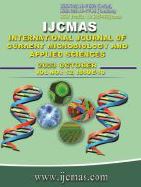


 National Academy of Agricultural Sciences (NAAS)
National Academy of Agricultural Sciences (NAAS)

|
PRINT ISSN : 2319-7692
Online ISSN : 2319-7706 Issues : 12 per year Publisher : Excellent Publishers Email : editorijcmas@gmail.com / submit@ijcmas.com Editor-in-chief: Dr.M.Prakash Index Copernicus ICV 2018: 95.39 NAAS RATING 2020: 5.38 |
Menstruation plays a crucial role in health and reproductive cycles of females. However, Menstrual Hygiene Management (MHM) poses significant challenges to many developing emerged in women's menstrual health and the environmental factors that influence it. This report represents the profiling of materials used during manufacturing of sanitary napkins to optimized practices required to manage and dispose menstrual waste effectively. Methodology: Various sanitary napkin brands were chosen based on popularity, affordability, and biodegradability. The selected brands were tested in accordance with the Bureau of Indian Standards (BIS) guidelines, using optimized procedures recommended by the textile committee. Around twenty-eight (n=28) napkins were tested for the same. Result: - The materials used for the top sheet, core absorbent material, and bottom sheet of each napkin were examined. Out of the 27 napkins tested, 12 napkins (35.71%) had natural fibre top sheets, 26 napkins (92.85%) had natural fiber absorbent materials, and all 27 napkins (100%) had synthetic bottoms. Conclusion: The majority of commonly used sanitary napkins are made of synthetic materials, and their absorbent gel components are not biodegradable. It is essential to explore alternative solutions for effectively managing this waste and promoting sustainable menstrual hygiene practices.
 |
 |
 |
 |
 |